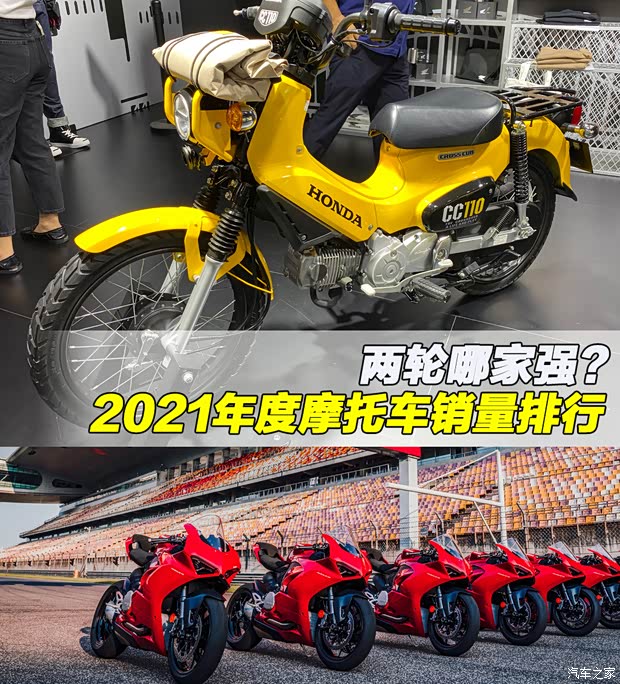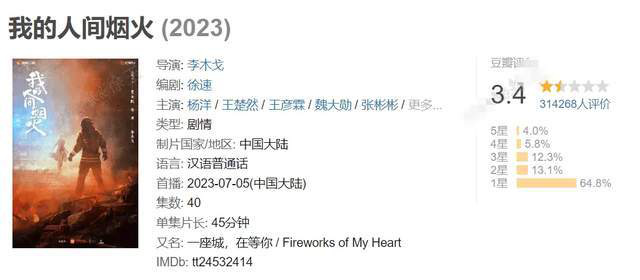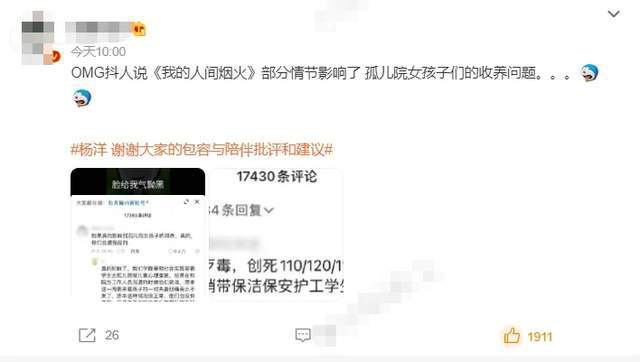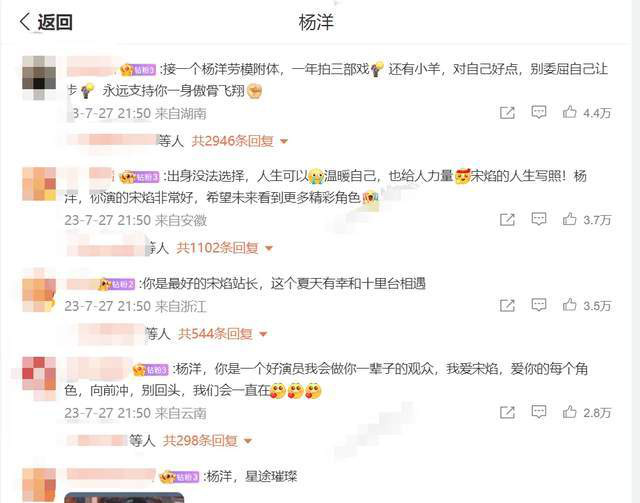On March 16th, 2022, Beijing time, "2022 Spring Conference of Huawei Whole House Intelligence and Whole Scene New Products" was officially held. At the press conference, Huawei launched a new generation of Huawei whole-house intelligent solutions, which brought about a heavy upgrade of whole-house intelligence and an innovative experience of spatial interaction, and opened a new chapter in smart life experience. At the same time, many new smart terminal products, such as whole house WiFi, smart door lock, smart portable speaker Sound Joy, Huawei P50 new color, Huawei nova 9 SE, Huawei MatePad Paper, Huawei MatePad 10.4, Huawei Watch 3 new color, FreeBuds 4E, etc., also appeared simultaneously at this conference. Through the combination of art, emotion and technology, it further enriched the scenes of smart life and created a new intelligent experience with temperature for consumers.

People-oriented innovative interactive concept leads the evolution of whole house intelligence to active intelligence.
The essence of whole house intelligence is the spatial interactive revolution, which is also the way to break the traditional smart home. At present, most smart homes are single-point intelligence with smart items as the core, simple systems and initial scenes, and most of the connections are "point control points", lacking system-level scene linkage. In order to better meet the upgrade of users’ interactive experience, the "1+2+N" strategy of Huawei’s whole house intelligent solution was upgraded in 2022. The "1" upgrade brought Huawei’s whole-house intelligent host SE, which realized the serialization of the host and helped the whole-house intelligent users to realize a set of intelligent hosts and connect the whole house. "2" is upgraded to the connection and interaction between the host and the system, including the existing whole-house interconnection, and brings a brand-new interactive hardware-the whole-house central control family, which together with the interactive software of Smart Life APP form two interactive cores, so as to upgrade the home interaction and realize natural and efficient interaction. N subsystems have been upgraded to ten subsystems in the whole house, realizing the interconnection, centralization and naturalization of the whole house, making people-oriented and evolving to active intelligence, so that more users can easily live in a comfortable future home.

Huawei’s whole house central control family includes intelligent central control panel, intelligent switch and intelligent panel. Among them, the central control panel is equipped with HarmonyOS for the first time, and it is also the first FHD+ central control panel. It is equipped with star ring buttons to support intelligent functions such as AI scene recommendation and one-button AI dynamic scene startup. When you drag your tired body home, you don’t need to complete the steps such as turning on the air conditioner, closing the curtains, turning on the light, turning on the air purifier, etc., just press the star ring button to turn on the home mode with one button. At the same time, the one-button switching scene has the AI environmental awareness function, which actively matches the environmental state. For example, when you return home at night, you will automatically set the warm color light environment. After turning on the night start mode, the twilight will light up at night, which will not affect your family’s sleeping; If it is found that the temperature is too high or the air quality is poor, the system will call the fresh air with one click to trigger the adaptation scene with the actual environment, making the touch buttons more emotional and making the home a home that knows you and has temperature.

In addition, a wealth of sensors are integrated in the central control panel, so that the human body is close to automatic sensing and bright screen for intelligent recommendation, including weather, traffic, environmental information and so on. In the process of use, the 10-inch central control panel is equipped with a 6-microphone linear array to support the whole house pickup, and the comprehensive wake-up rate is over 99%.
Huawei’s smart panel in the whole house integrates the scene, lighting, curtains, air conditioning, floor heating and fresh air control, and bid farewell to the chaos of switches. AMOLED material is used on the screen, which has high resolution, wide color gamut, high contrast and brighter colors. It is equipped with a light sensor, which automatically brightens the indoor light when the external environment is bright, and the field of vision is clearer. When the external ambient light is dark, the indoor brightness is automatically dimmed, the light is soft and not dazzling, the screen is automatically turned on when it is near, and the screen is automatically turned off when there is no one, which saves energy and protects the environment while avoiding light pollution at night.
Serialization of the host allows more families to have smart homes.
In the "1+2+N" new generation solution of Huawei’s whole house intelligence, 1 is a whole house intelligent host, equipped with the central control system of HarmonyOS, and a family "smart brain" integrating learning, calculation and decision-making. This time, it is upgraded to a smart machine series, including Huawei’s whole house intelligent host and Huawei’s whole house intelligent host SE.

The former has high integration, modularization, intelligence and expandability for large-sized front-mounted apartment, while the latter adds interfaces such as property intercom system and interactive panel interface, which realizes the connection between home intelligence center and interactive core, enriches the intelligent use scenarios of whole house intelligence, reduces the user’s use cost while maintaining the sense of quality, and increases the flexibility of equipment application.
Huawei’s whole house smart host skillfully combines the fuselage with weak current in design. This time, Huawei’s whole house smart host SE adopts miniaturization design, with double 86-box size, and the overall volume is reduced by 95% compared with Huawei’s whole house smart host, which is exquisite and compact. Not only is it convenient to install, it can work independently, but it can also be flexibly matched with the central control panel and installed by hanging screen to become a host with screen. Thanks to the dual-core ARM CPU, narrowband PLC chip and HarmonyOS, Huawei’s whole house intelligent host SE can become the whole house interconnection hub and the whole house AI hub. Huawei’s whole house intelligent host SE supports the access of 128 PLC devices, and supports the local control of network disconnection.
Huawei’s advanced PLC-IoT technology has excellent performance in network performance, anti-interference, stability and simple wiring.500Kbp high network performance, 99.99% high reliability and anti-interference, multiplexing power lines, greatly reducing wiring length, simple construction,In the era of whole house intelligence with more and more smart devices, better networking and digitalization will be realized.
System scene innovation brings a leap in scene experience.
The layout of each space is different, including public space with global perspective and exclusive space with strong functional attributes. This time, N subsystemsFully upgraded to ten subsystems of the whole house.. Subsystem integrates related ability items, and equipment management is more efficient. All subsystems not only need a wide range of ecological products to provide users with flexible choices, but also need technical blessing to provide core products in order to enhance the intelligent experience of the system. These core products strongly rely on Huawei’s core technologies, such as sensing technology, communication technology and intelligent control technology. Taking the security subsystem as an example, in addition to a wide range of ecology, Huawei’s whole-house intelligent solution also provides core items with strong product strength, such as AI sensors and smart door locks.
Huawei’s whole house intelligent AI extrasensory sensor is the first time Huawei has applied the core sensing technology of intelligent driving to the whole house intelligence, achieving more accurate perception, accurately distinguishing people from things, sensing stillness, trajectory, posture and range, and accurately sensing human body micro-motion. Compared with ordinary infrared schemes, it is not disturbed by smoke, fog, dust, etc., accurate and stable, and always protects family members.

In addition, the rich HarmonyOS ecology is also the key upgrade part of Huawei’s whole house intelligence. The rich HarmonyOS Zhilian ecology has built a relatively complete subsystem. At present, more than 1,900+brand partners have settled in Harmony OS family, and 4,500+smart items can be connected to the whole house intelligence. One screen can call the whole house appliances, covering traditional big appliances, kitchen small appliances, household appliances, personal beauty care, furniture, lighting and sunshade, electrical heating and ventilation, security sensor, balcony bathroom, audio-visual entertainment, education, office, travel, medical health, sports equipment, robot toys and many other categories. With the continuous improvement of HarmonyOS’s ecology, products are constantly updated, covering all users’ households.
Experience worry-free, online and offline service upgrade
On the basis of the previous quality service, Huawei’s whole house intelligent service has been further upgraded. Intelligent fault diagnosis is based on Huawei’s intelligent protection cloud platform, which provides users with the ability or tools of self-diagnosis and self-repair of the whole house equipment through Huawei Smart Life APP, and keeps the whole house intelligent lines and equipment running stably. In terms of offline services, Huawei Whole House Intelligence has completed the construction of 50 stores in 50 cities in 2021, and will complete the coverage of 500 stores this year. Users can enjoy the convenient services brought by Whole House Intelligence in the city where they live.

Industry expansion, whole house intelligence popularization benefits more fields.
Huawei’s whole house intelligence not only plays an increasingly important role in home life, but also extends from the residential field to the whole space of medical care, education, office and hotel. At present, it has completed strategic cooperation with TOP real estate developers such as World Trade Center, Greenland, Jinmao and Ocean Shipping, and is entering the fast lane of development.

For industry partners, Huawei’s whole house intelligence Openlab is actively open, enabling real estate, property office, conference hotel management and school management to easily build a space wisdom experience. On the other hand, we will continue to deepen the opening capabilities of intelligent hosts, central control screens and smart live apps, open up the data, response and control of the three, attract 1900+ partners, and access 4500+ smart items, so as to help business partners realize space intelligence quickly and with high quality, and provide users with a richer wisdom experience.
In terms of the price of Huawei’s whole house intelligence, there are 39,999 typical apartments (2 bedrooms and 1 living room) with an area of 80㎡. The browser searches for "Huawei’s whole house intelligence" and enters the offline store in official website to make an appointment. At present, 64 Huawei intelligent authorized experience stores have been opened in 43 cities including Beijing, Shanghai, Guangzhou, Shenzhen, Wuhan, Changsha, Wenzhou, Hefei, Chengdu, Nanjing and Fuzhou.
At the press conference, Huawei also released a series of new terminal products, such as smart door locks, whole house WiFi, smart speakers, mobile phones, tablets, smart watches and smart headphones, to create a new experience of smart life in the whole scene.
The first smart door lock equipped with HarmonyOS is released, which is more convenient, safer and smarter.
Facing the smart home scene, Huawei officially released the first series of smart door locks equipped with HarmonyOS, which supports the financial-grade security AI 3D face recognition function. The whole machine has obtained HarmonyOS TEE CC EAL5+ security certification, security chip EAL5+ certification and door lock CCRC enhanced security certification, and has nine unlocking methods such as face, fingerprint, password and one-touch unlocking of mobile phone/watch /NFC card. With the visual recognition technology, security encryption technology and AI capability accumulated by Huawei for many years, Huawei’s smart door lock supports HarmonyOS distributed visual cat’s eye, visual intercom with mobile phone, picture-in-picture with smart screen, and is equipped with high-definition door lock inner screen to make the dynamics outside the door visible in real time, bringing a convenient, safe and intelligent comprehensive experience. Adhering to the concept of technology adapting to the old, Huawei smart door locks bring higher security, higher convenience and higher quality practical products to consumers in China. It has established a clear development direction for the smart door lock market and boosted the industry to the high end.
The new choice of Wi-Fi in the whole house, Huawei Routes Q6 and AX6 are officially released.
As an important network foundation of whole-house intelligence, Huawei’s whole-house Wi-Fi is even more important in the context of the era of whole-house intelligence. Huawei Route Q6 and Huawei Route AX6 form a professional combination scheme for surfing the Internet, which can easily meet the multi-directional needs of all-family users and make users enjoy a smart life more easily. Among them, wide coverage, high-speed stability and plug-and-play are the distinctive product labels of Q6 series, which will bring excellent experience to users. The AX6, which locates Huawei’s fastest dual-band Wi-Fi 6+, has a speed of 7200Mbps, and is called the "future-oriented router". Together, they escort the whole house intelligence and the whole scene smart life.
The first portable speaker equipped with HarmonyOS was unveiled, and its 26-hour long battery life was outstanding.
In addition to the door lock category, Huawei Sound Joy, Huawei’s first portable smart speaker released this time, is also one of the new categories of Huawei terminals. The speaker uses 40W super fast charge, with a battery life of up to 26 hours and excellent performance. In terms of sound quality polishing, Huawei Sound Joy and Divare jointly designed, adopting Divare’s four-unit divide-by-two design, which has powerful bass and loud and transparent treble. Shake combined stereo, one-touch sound transmission, super series connection and other features, HarmonyOS convenient functions, colorful light rings, IP67 dust-proof and water-resistant features, etc., further increase the playability, which can be enjoyed both outdoors and indoors.
Huawei P50 series sends out three new color schemes, which leads the spring color trend with natural inspiration.
Huawei P50 series started a new round of upgrading of scientific and technological aesthetics, bringing three new color schemes: Xinghe Blue, Yunjinbai and Danxia Orange, and deducing scientific and technological aesthetics with natural inspiration. Galaxy Blue adopts anti-fingerprint frosting glass technology for the first time. Danxia Orange and Yunjin White are made of ultra-thin plain leather and equipped with nano-glass-ceramics screen, and their anti-drop ability is improved to 5 times compared with the ordinary glass version. Huawei P50 series refreshes the mobile image experience with the black technology innovation of primary color dual image unit, computational optics and primary color engine, creating the ultimate photography experience for users and building an image culture that belongs to everyone. With the blessing of HarmonyOS, the P50 new color series will be endowed with more intelligent experiences, so as to keep pace with technological innovation and aesthetic design.
The 100-megapixel HarmonyOS mobile phone brings many innovative gameplay to young users.
This time, a new product of nova series-Huawei Nova A9SE was also released. As a 100-megapixel HarmonyOS mobile phone for young people, nova9 SE has been fully upgraded in appearance, image and comprehensive experience. Nova A9SE uses a 6.78-inch screen with an ultra-narrow bezel, creating a straight screen design with an ultra-narrow bezel with a high screen ratio of 94.85%. Nova A9SE is equipped with a 100-megapixel AI four-camera system, which makes the details of the film clearer. And under the blessing of HarmonyOS, it brings video games such as double-scene video before and after, and one-click filming of video before and after. In addition, Nova A9SE brings the desktop pet function, and pets designed according to the living habits of real life can accompany users for 24 hours.
Huawei WATCH 3 Galaxy Blue released in a new color to support lung infection risk screening.
The new color of Huawei WATCH 3 Xinghe Blue also appeared simultaneously, showing the vitality of spring, and the cute dial made the "small world on the wrist" full of fun. Family space goes further. When a family member falls down unexpectedly or initiates SOS emergency help, you can be an emergency contact to receive the emergency phone call and SMS notification of the watch call, and know the location of the family member at the first time to provide help to the family member in time. In addition, Huawei WATCH 3 has joined the respiratory health research jointly sponsored by tongji hospital affiliated to Tongji Medical College of Huazhong University of Science and Technology and 301 Hospital, which can identify the risk of lung infection based on human physiological parameters such as body temperature, respiratory rate, heart rate variability and cough sounds, and help users better carry out active health management.
Semi-in-the-ear comfortable noise-reducing headphones Huawei FreeBuds 4E made a new appearance.
At the same time, as a new member of the semi-in-ear noise-reducing earphone adapted to HarmonyOS, Huawei FreeBuds 4E true wireless earphone was officially unveiled at this conference. Relying on the technological innovation brought by HarmonyOS 2.0 era, Huawei FreeBuds 4E brought the advanced design concept of the operating system into the earphone to unlock more audio wisdom experiences. At the same time, it inherited the semi-open active noise-reducing 2.0 technology gene, combined with "immersive" listening with high-resolution sound quality and "air sense" The release of Huawei FreeBuds 4E not only enriches the layout of Huawei audio products, but also helps Huawei to live a smart life in the whole scene.
Huawei’s first ink tablet equipped with HarmonyOS 2 was officially released in China.
At the press conference, Huawei MatePad Paper, the first ink tablet product equipped with HarmonyOS 2, officially met with the majority of users. It integrates traditional flat and paper-like displays, and its slim and handy body and comfortable eye-protecting screen create an immersive reading experience. Close to the writing sense of paper and pen, convenient recording function helps people in the workplace to work intelligently; Under the blessing of HarmonyOS 2, the smooth cross-device circulation interconnection has changed the traditional ink tablet content circulation dilemma, making cross-device collaboration more handy; Its pre-installed Huawei reading covers massive book resources, which is convenient for people in the workplace to charge at any time. It provides a new choice for urban elites to immerse themselves in office and reading.
A new generation of MatePad comes out as a smart tablet with both learning and entertainment.
On March 16th, at the spring conference of Huawei’s whole house intelligence and new products in the whole scene, the brand-new HUAWEI MatePad was officially released, equipped with 2K high-definition eye protection full screen, with professional learning function and experience, and committed to bringing consumers a smart experience of learning and entertainment. As an education terminal in HarmonyOS, relying on the platform capability of Huawei Education Center to further realize the digitalization of education, the multi-dimensional product ecological matrix will continue to build a smart education ecology, providing users with intelligent, efficient and temperature-sensitive full-scene education services.
AITO asks the M5 four-wheel drive flagship edition to officially open the reservation.
AITO Wenjie M5 four-wheel drive flagship version officially opened for booking at 21:08 on March 16th, with an official price of 319,800 yuan. Huawei’s deeply empowered AITO Wenjie M5 is the first model to be equipped with the HarmonyOS intelligent cockpit. As the top model in the car series, AITO Wenjie M5 four-wheel drive flagship edition is equipped with HUAWEI DriveONE pure electric drive range extension platform, and the comprehensive cruising range of WLTC can reach 1000+km, of which the pure electric cruising range is 150km, and the peak total power is as high as 365kW comparable to that of supercar, which can achieve 0-100km/h acceleration of 4.4 seconds. In addition, the flagship version adds the exclusive car paint of Azure Blue, enjoys exclusive advanced crystal diamond gear, comes standard with the main driver’s private headrest audio and HUD head-up display system, and is equipped with 20-inch aerodynamic wheels and Pirelli P ZERO high-performance silent tires. The official booking of the flagship version of M5 four-wheel drive by AITO further improves the product matrix of all models and provides consumers with more choices.
















































